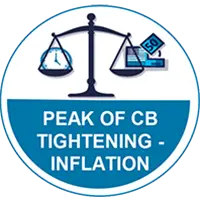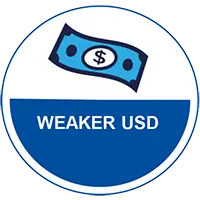Summary
The comeback for EM in 2023
While 2022 was a challenging year for Emerging Markets, amid the Fed’s aggressive response to high inflation, we are more constructive for 2023 across four main themes:
- The reopening in China. This is becoming a major catalyst for EM in 2023. The economic recovery after reopening is well on track, so much so that we have revised up our growth expectations for 2023 to 6%.
- The second supportive point is linked to the first as China’s earlier-than-expected reopening and a downturn in US economy should contribute to a widening EM-DM growth differential playing in favour of the former.
- The global scenario is complex due to the stickiness of inflation. However, recent tightening of financial conditions following the banking turmoil could reduce the need for aggressive Fed rate rises. As the end of the US tightening cycle looms, we expect the dollar to be stable / weaken in the second half of 2023.
- After significant monetary policy tightening in many EM countries over the past two years, they are in an advanced stage compared to DM. The tightening in EM may be behind us in the vast majority of cases, but the EM landscape is very diverse.
However, investors need to be aware of various risks from a global-to-local perspective. One risk to watch out for is stronger-than-expected tightening by the Fed. Another issue to monitor is geopolitical risk, which is still rising, as evidenced by the ongoing war in Ukraine and tensions over Taiwan. The final point worth mentioning is the likely increase in sovereign defaults due to higher refinancing costs, large outflows, lower liquidity and increasing areas of weak fundamentals.
In terms of asset allocation and considering the above context, we see opportunities in all EM segments:
- EM bonds offer an interesting entry point in terms of carry and spreads. We see opportunities in Hard Currency, local rates and FX. We are selective and we prefer commodity exporters, thanks to China’s reopening, as well as other LatAm countries, which are supported by their higher carry over other regions. We are also constructive on countries that are at the end of their tightening cycle.
- On the equity side, EM should benefit from the Chinese reopening, reasonably attractive valuations and earnings expectations, which have improved recently.
- From a long-term perspective, China and India are key markets which offer the opportunity to play the internal demand story and allow investors to diversify their portfolios, due to their lower correlation, and achieve a similar return to a 60-40 historical portfolio.
- Finally, the expansion of sustainable finance in EM is evident, making ESG factors critical in EM selection.
Key themes for investing in EM in 2023

|
EM-DM growth differential to move in favour of EM in 2023 driven by China’s reopening and the slowdown in Developed Markets. |

|
After a significant tightening of monetary policy by many EM CBs, we expect a more stable monetary policy, due to the peak for inflation being behind us, (though from very elevated levels and with wide differences across countries). In some countries we could even see rate cuts in the second half of the year. |

|
The appreciation of the US currency in 2022 was a major challenge for many EM countries. However, different from last year, the weak fundamentals in the US currently are reverting fast and a deteriorating outlook for the US vs the rest of the world is less positive for the USD and supportive for EM currencies in H2 2023. |

|
One of the main risks to watch out for is the excessive tightening of financial conditions affecting economic growth. Some low-income countries have already been impacted by the higher cost of refinancing. Another key topic to look at is geopolitical risk, which is still high. Investors also need to monitor idiosyncratic stories, and internal vulnerabilities which can increase EM fragmentation. |



